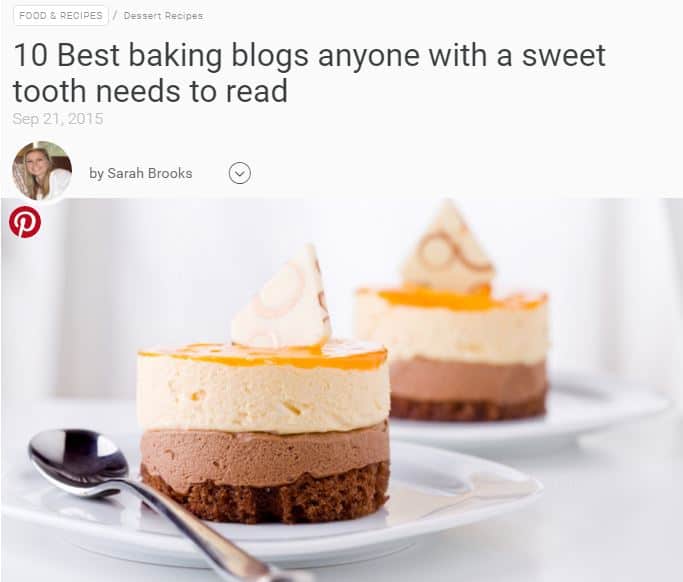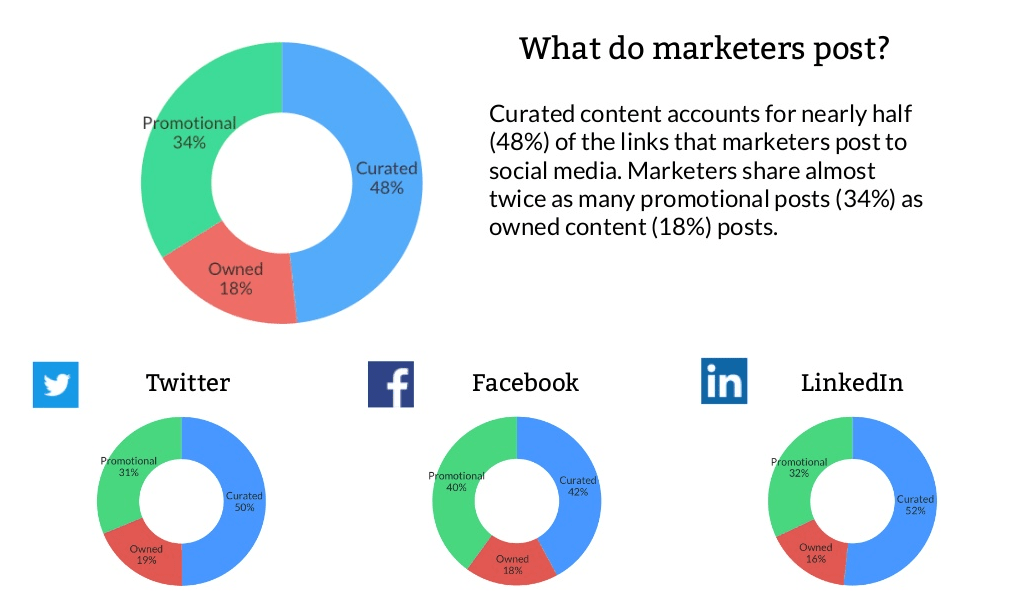
Curated Content: The How-To Guide
Whether you have any idea what curated content means or not, you’ve likely come across it in the last 24 hours. Almost every content marketer gathers content that was created by someone else in addition to their own posts.
While webmasters strive to create articles that their followers will be interested in, integrating posts from authors besides themselves enables them to have a broader range of topics and a deeper pool of expertise than if they relied solely on their own knowledge. Here is what you need to know about using this type of content in your marketing.
What Is Curated Content?

Curated content is any type of blog post or piece of content written by another organization that you find, cite and present to your readers. These types of posts typically contain research, valuable information or products that are unique to that company.
Curated content is not created by the presenter but is instead used and displayed by another entity for the benefit of readers. Anything curated should be properly cited or linked to in the content you share.
Why Is Curated Content Useful?
In this digital day and age, we know how important it is to maintain your blog. For most companies with an online presence, consistently publishing quality content on your website can improve search engine rankings and get more traffic. You want to be known as an expert in your industry, and quality content can improve your credibility online.
However, this is not an easy task to accomplish. Marketing Insider Group observed that companies that publish content 2-4 times a week on their website have the greatest chances of content marketing success. Multiply a minimum of 2 posts by 52 weeks, and that’s 104 posts per year. And if your business continues to thrive, that count doesn’t end there.
Without curated content, this is overwhelming. That’s 104 posts per year that have to be completely new and original. In reality, thinking up completely original ideas for each article is unnecessary and impossible, especially when there are hundreds of other organizations posting content in the hopes of benefitting similar readers.
Not every business is a competitor. In fact, many can be your allies. Using (and citing) content from other websites not only improves the content you create, but it can also expand your customer reach and offer useful resources for your readers. It’s a win-win situation.
How To Curate Content

Curated content sounds good, right? There are many benefits of using content cited from other great sources. But how do you incorporate curated content that is useful and intriguing? There are several different ways to include curated content in your marketing. Finding the perfect balance will take some trial and error, but there isn’t just one way that works for all companies.
Luckily, we have 4 ways that can be effective, and they can help you come up with original content. Try a few options and see which method seems to work best for your industry and receives the most positive feedback from your readers.
1. Curated Lists
No matter what medium you’re working with, you’re likely to have several options for creating lists that will be intriguing to your readers. There are plenty of articles online that have valuable information but are not as easy to find. Spending some time looking through articles and selecting the best can give your readers a broad range of topics without you having to spend months creating high-quality content of that magnitude.
The options for lists are endless and depend on the company you’re marketing for. If your business involves selling kitchen supplies, a list of the top baking websites, like this one for example, would be beneficial and inspire your readers to purchase your products in order to try out new recipes. This type of curated content also sets you up as an expert on the subject who is sharing beneficial knowledge with followers for free.
2. Case Studies
When you have a point you want to make, having case studies to back it up is one of the fastest ways to gain credibility in the eyes of your readers. While performing all the necessary studies would take years on your own, you can compile examples and create high-quality content to back up your opinions in the space of a few days.
3. Content Roundups
The type of roundup you create will have a lot to do with the type of industry you’re marketing to. A celebrity blogger may send out an email with the top celebrity gossip stories of the week, which is usually called a content roundup. Another option is to create an expert roundup, in which you come up with common questions and ask experts in the field to give their answers, similar to this expert roundup I did. Once you have all their comments, you can rank them and add your own original content to explain your processes and the answers you received.
4. Guides or Walk-Throughs
This works especially well if your niche market is one that is more complicated, like SEO content writing. You should have plenty of topics to delve into and explain step-by-step processes to give your readers a guide to certain aspects of the industry.
Additional Benefits of Curated Content

You may wonder what the point is of taking the time to find other articles and give credit to fellow professionals when you’re trying to build your own brand. Here are some reasons why 82% of content marketers choose to curate content.
Increased Expertise
While you may be great at what you do, there’s no way you’re more knowledgeable than anyone else in every single aspect of your field. Someone out there has probably had some experiences with different topics that allow them to provide deeper insight, and they’ve probably written about it. Take advantage of that and share the knowledge with your readers. While it may not have come straight from you, they’ll remember they read it on your page, hopefully share it and bring additional readers to your site.
Social Media Presence
This brings up the next point. Curated content is one of the most popular shares on social media, garnering approximately 48% of all clicks and potentially becoming your top referral path. This has proven to be one of the best routes for expanding business and increasing visibility, so if you haven’t launched a social media campaign, there’s never been a better time to start.
Build Connections
While beginners may worry about pushing their readers to competitor sites, the benefits can outweigh any negatives. By exposing your own viewers to fellow associates, you can establish mutually beneficial relationships within your field. Other professionals will generally be grateful that you shared their information and are willing to return the favor in the future.
Time-Saving
While it takes time to read through others’ pages, it takes a lot less time than it would for you to create high-quality content that covers every part of your topic. Save yourself time by spreading the content love to other writers as well.
How To Choose Quality Curated Content

The last thing you want to do with curated content is to use content that makes you lose credibility in the eyes of your readers. Not every blog post or case study is equal, and you’ll have to take this into consideration as you curate your content. We have a few pointers for you to make the process easier.
Be Selective
When looking for sources, always check to see if the website you’re citing appears reliable. If there are lots of popups and the layout seems a little suspicious, it’s probably best to move on to other content. As a content curator, you are choosing the best of the best for viewers; You don’t want to lead your readers to scam websites or disappoint them with confusing, sketchy content.
Along with checking the overall appearance of the curated content, don’t forget to double-check the data being presented. If you want to become an expert in your industry, you need to provide accurate and honest information, especially when you cite other sources. Check out the website, look for credentials and use your best judgment.
Stay Relevant
Although you may have chosen the greatest content to share, you won’t get far if it has nothing to do with business. Sometimes, people post lists or roundup that fall completely out of your branding circle. These may be attention grabbers, but you want your audience to feel secure about what your business is and the content it presents. Relevant content is highly important in branding and finding potential customers.
It’s a good idea when crafting your blog post to have a rough draft concerning the content of the post. What will you be sharing? Having a draft beforehand can make curating content even easier since you’ll know it will be on point with your brand.
Do Your Research
As a curator of content, you have a responsibility of finding content that is useful, relevant and accurate. As you search for content, look for these things. This will help you create curated content that speaks to readers and gets the attention of your social media accounts.
Final Tips

There are a few things to remember when curating content.
- Be thorough. Gather as much content as possible and be sure to read it all. This will obviously take some time, but it’s worth it. If you neglect a respected source for your expert opinions, your readers are likely going to notice and doubt your authenticity.
- Choose carefully. If you’re planning to use curated content and you can choose the topic and industry, stick to things that have plenty of information already available. This way you’ll never run out of content to include with your own.
- Angle carefully. While choosing a well-covered topic will provide you with endless content options, it also means yours needs to be great in order to stand out. Some ways to achieve this are by finding unique angles and approaching those topics that are more difficult and avoided by other writers.
- Give credit. Hopefully, this goes without saying, but always provide credit to the original author. If you’re in the same industry and both curating content, there’s a high likelihood that they’ll someday come across your page. You want that moment to be a happy one when they see their name attached to their work and will hopefully want to reciprocate the favor.
The point is, don’t be afraid to use curated content, but be sure to do it the right way. Include your own original, high-quality content with what you find online and you’ll have an excellent piece to share with your followers.
Screenshots were taken on 3/28/16 from http://www.sheknows.com/food-and-recipes/articles/985127/best-baking-blogs and http://www.slideshare.net/Rallyverse/infographic-how-do-marketers-mix-owned-curated-and-promotional-content-our-q4-2014-data
- How To Use Keywords in Your Content for SEO - September 20, 2024
- Creating Google-Friendly Content - December 31, 2023
- Which Type of Content Brings In the Most Traffic? - December 28, 2023



